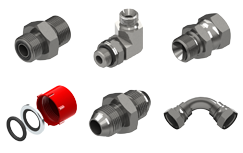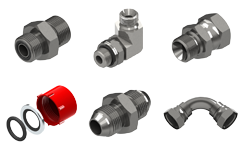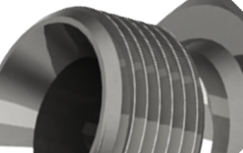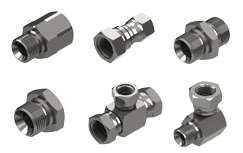‘O’ Rings and Seals
We recommend that the following steps are taken when storing ‘O’ rings.
Shelf Life:
Storage temperature should be below 25°C, ideally below 15°C; temperatures exceeding 25°C may accelerate deterioration sufficiently as to effect service life of the product. Low temperature should not affect rubber products permanently, but care should be taken when handling materials to avoid distortion, and when taken from low temperatures into usage, the product should be approximately 30°C in temperature before being placed in service.
Humidity:
Moist conditions should be avoided, and therefore storage methods should be chosen which eliminate the risk of condensation. The relative humidity of the atmosphere in storage should be less than 70% or, if polyurethanes are being stored, less than 65%.
Light:
Product should be protected from light, particularly lights with a high level of ultra-violet such as direct sunlight and strong artificial lighting. It is recommended that any windows be covered with a red or orange coating/screen.
Radiation:
Products should be protected from all sources of ionising radiation.
Ozone:
Ozone is particularly damaging to rubber and therefore storage rooms should not contain any equipment that can generate ozone.
Deformation:
Rubber should be stored free from superimposed tensions and compressive stresses or other causes of deformation.
Contact with liquid and semi-liquid materials:
Rubber should not come into contact with liquid or semi-liquid materials or their vapours at any time during storage, unless these materials are an integral part of the product or the manufacturer’s packaging. When rubber products are received coated with their operational media, they should be stored in this condition.
Contact with metals:
Certain metals and their alloys (in particular, copper and manganese) are known to have deleterious effects on some rubbers. Rubber should not be stored in contact with such metals except when bonded to them but should be protected by wrapping in or by separation with a layer of suitable material.
Contact with dusting powder:
Dusting powders should only be used for the packaging of rubber items in order to prevent blocking, and the minimum quantity to prevent adhesion should be used. Any powder used should be free from any constituent having a deleterious effect on the rubber or the subsequent application of the rubber.
Contact between different products:
Contact should be avoided between products made from rubbers of different compositions, including products differing only in colour.
Rotation of stocks:
Products should be issued from stores in strict rotation so that the products remaining in store are those most of most recent manufacture.
EXTRACTED FROM BS ISO 2230:2002
20/09/2018
DESIGN DETAILS AND SPECIFICATIONS SUBJECT TO CHANGE WITHOUT PRIOR NOTICE – Whilst every effort has been made to ensure the accuracy of the information supplied herein, Burnett & Hillman cannot be held responsible for any errors or omissions (E&OE). Working pressures quoted are taken from the relevant standard and are provided as a guide only.




